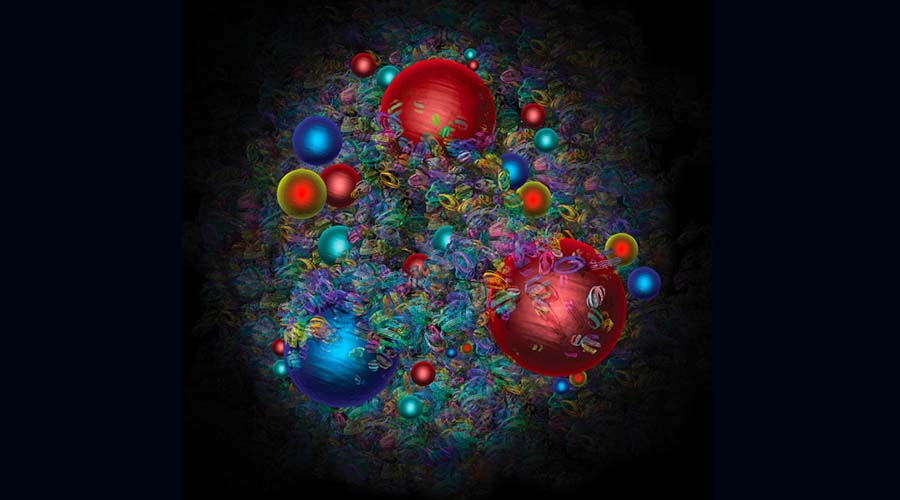
New research by the NNPDF (Neural Networks Parton Distribution Functions) collaboration, led by the University of Milan and INFN, could shed light on a surprising feature of the structure of protons. The study, published in the journal Nature, indeed showed how 'charm' quarks, along with the better-known and lighter 'up' and 'down' quarks, are also to be counted among the intrinsic components of these atomic constituents, confirming a hypothesis developed more than 40 years ago. The result was achieved by adopting innovative machine learning techniques, thanks to which it was possible to analyse and solve in detail the large mass of data produced by particle colliders. In addition to improving the understanding of the structure of protons, which is still little known, the study will help to make the theoretical description of collisions between these particles more accurate, facilitating the observation of possible clues to new physics.
The simple representation of the proton as an object consisting of only two 'up' quarks and one 'down' quark confined and bound together by the mutual exchange of the strong interaction mediating bosons, the gluons, ignores the presence in the proton of an infinite number of pairs composed of quarks and their antimatter counterparts, the antiquarks. This complex composition changes in proton collisions as energies increase, and thus as measurement scales decrease. A scenario that is confirmed in the predictions of quantum chromodynamics, the reference theory for describing the strong nuclear force.
In 1980, the physicists Stan Brodsky, Paul Hoyer, Carsten Peterson and Noriskue Sakai, formulated the hypothesis that the 'charm' quark, whose mass is greater than that of the proton itself, could also represent one of the intrinsic components of these atomic constituents at rest, thus not to be confused with the heavy quarks irradiated by collisions between protons at high energies. A proposal at the centre of a scientific controversy that has lasted more than 40 years, that could now be resolved by the NNPDF collaboration through the development and use of state-of-the-art analysis methodologies, capable of overcoming theoretical and experimental limitations related to the determination of the proton's internal structure.
The result was made possible by the use of new, very recent data, as well as by the use of theoretical developments obtained from the NNPDF collaboration itself, that allow unambiguous separation of the intrinsic component from the radiative component. A key contribution was also made by the development of a methodology based on machine learning, which allows information to be extracted from data in a particularly efficient way.
Establishing that the proton has an intrinsic charm component could have important implications in the study of both proton properties and physics beyond the Standard Model, the theory that describes the elementary particles and their interactions. The 'charm' component identified has, on the one hand, an impact on precision physics, such as measuring the parameters of the current theory, and consequently on the search for deviations from the same, such as searches for possible candidate particles for dark matter. On the other, it provides us with important clues for calculation of the structure of the proton, starting from quantum chromodynamics, which remains difficult and elusive.
The research of the NNPDF collaboration was possible thanks to the results achieved by N3PDF, a research project, whose main goal is to develop a methodology based on modern machine learning techniques for determination of the structure of the proton, and which in 2016 received funding from the European Research Council (ERC Advanced Grant). The methodology developed by N3PDF is now used systematically by NNPDF. All the results, methods and codes of both projects are made freely available, open source.
The NNPDF international collaboration, which includes nine universities and research institutes from six countries, is now one of only three worldwide dedicated to determining and updating proton structure measurements.




